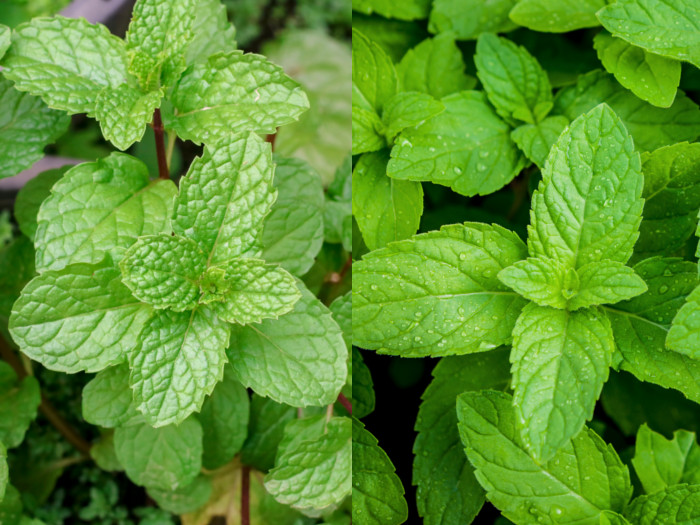There is a long-standing debate about spearmint vs peppermint, and while they share many similarities, there are a few key differences that separate the two.
Spearmint vs Peppermint
Spearmint and peppermint are used for many of the same purposes, but they aren’t the same plant.
Source
- Scientifically known as Mentha spicata, spearmint is a member of the Mentha genus and is native to Europe and Asia, although it has been naturalized all over the world throughout the course of history. [1]
- Unlike spearmint, peppermint is actually a hybrid member of the mint family, having been produced by crossing spearmint and watermint, and thus bears the scientific name Mentha x piperita. [2]

Spot the difference. Photo Credit: Shutterstock
Flavor
- The flavor of spearmint is a refreshing earthy taste, which is primarily from the R-carvone, one of the active ingredients, along with limonene, cineol, menthone, and menthol. [3]
- The flavor of peppermint is stronger than spearmint and has a higher menthol content, which may affect the flavor so strongly. Peppermint also possesses different active ingredients, including pulegone, pinene, and much higher concentrations of menthol and menthone. [4]
Uses
- In terms of its use, the distinct flavor of spearmint makes it popular as a flavoring agent in cocktails, as well as in sweet teas, herbal teas, and desserts, as well as toothpaste, mouthwashes, and chewing gums.
- There are about a dozen commercial and natural cultivars of peppermint, many of which are popularly used for cooking and medicinal purposes. Peppermint is used in similar ways, however, in candies, sweets, baked goods, teas, and cocktails.
Other
- Named for its pointed leaves, spearmint can be used fresh or dried, and can also be frozen without losing its potency.
- Like many other hybrids, peppermint is sterile, and cannot reproduce with its own seeds, but it is very hardy and can spread its own runners to cover large areas.
